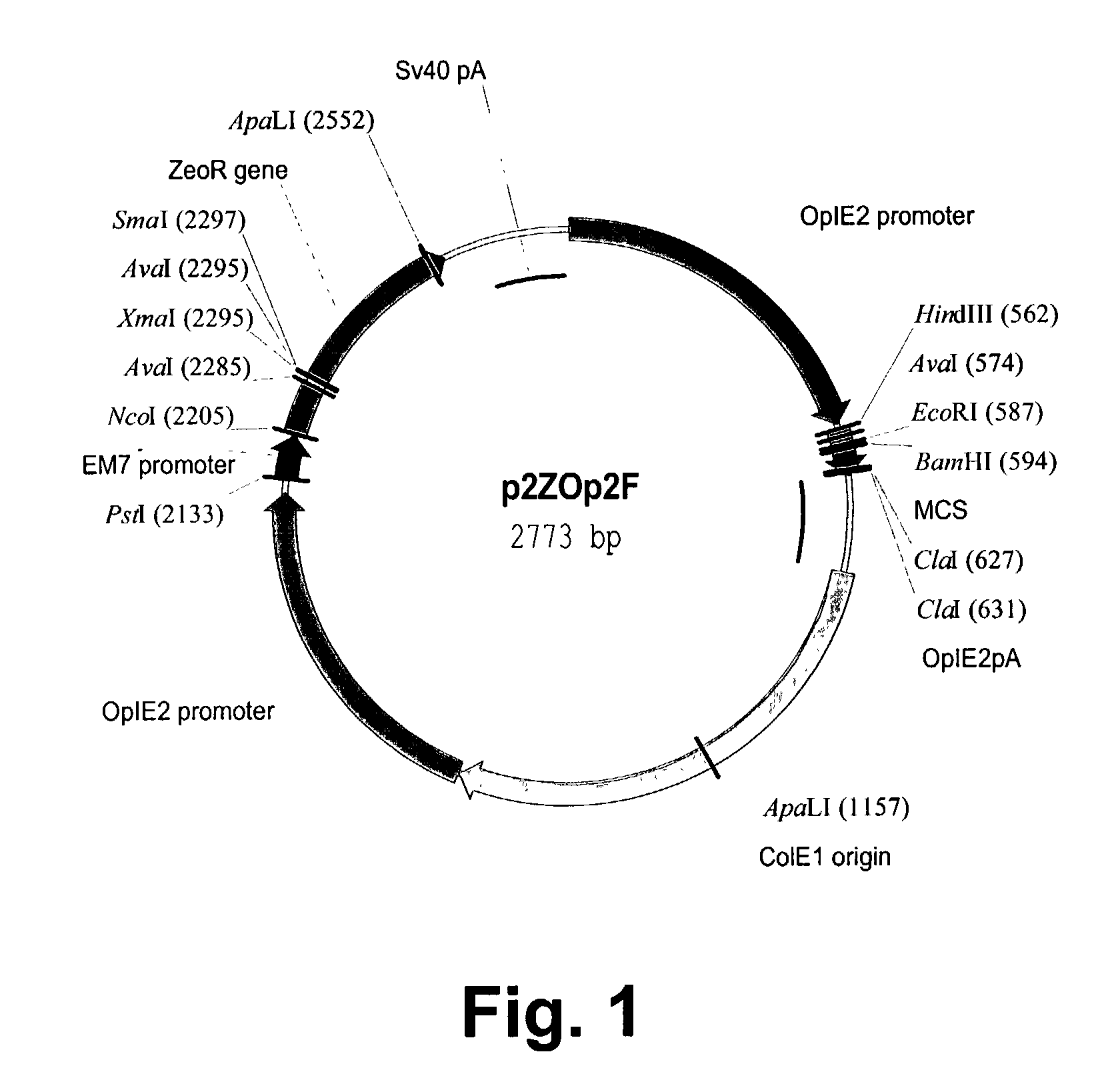Novel immunogenic mimetics of multimer proteins
a multi-mer protein and immunogenic technology, applied in the field of new immunogenic mimetics of multi-mer proteins, can solve the problems of impractical refolding, increased complexity of the protein in question, and low epitopes compared to the native self-protein, so as to improve immunogenic analogues, improve stability, and improve characteristics
- Summary
- Abstract
- Description
- Claims
- Application Information
AI Technical Summary
Benefits of technology
Problems solved by technology
Method used
Image
Examples
example 1
[0233] Design of 4 New Two-Epitope (P2+P30) Monomer IL5 Constructs
[0234] IL5 is an anti-parallel homo-dimmer, in which the C termini and N termini of the monomers are located closely in the molecule. This opens for the possibility of linking the two monomers into a single monomer, closely resembling the wild-type dimer quarternary structure.
[0235] We have approached this using either the p2 / P30 epitopes as linker or by inserting a di-glycine linker as described previously in Li et al. 1997, PNAS USA 94(13): 6694-9.
[0236] The native hIL5 encoding DNA molecule used in all the research work was purchased from R&D systems (BBG16). This DNA sequence did not include the hIL5 leader sequence; hence was added a synthetic DNA sequence encoding the natural hIL5 leader peptide. The sequences encoding the P2 and P30 T cell epitopes are derived from tetanus toxoid. These sequences were inserted into the native sequence of the gene thus providing the immunogenic variants of IL5. The insertions ar...
example 2
[0239] hIL5.34 and hIL5.35
[0240] In order to have the T-cell epitopes internally in the molecule, P2 and P30 are inserted head to tail as a linker between the two IL5 monomers thereby giving rise to two constructs hIL5-P30-P2-hIL5 (hIL5.34, mature peptide in SEQ ID NOs: 5 and 6) and hIL5-P2-P30-hIL5 (hIL5.35, mature peptide in SEQ ID NOs: 7 and 8)--both DNA constructs encode the natural IL5 leader sequence, resulting in a mature expression product of 266 amino acids. The translation products resulting from these designs are intended to fold into a "monomeric IL5 dimer", i.e. a monomeric molecule that has a tertiary structure that very much resembles the complete 3-dimensional structure of dimeric IL5.
example 3
[0241] hIL5.36 & hIL5.37
[0242] Based on the previous successful generation of a biologically active monomer "IL5 dimer mimic" by insertion of a di-glycinelinker by J. Li et al., similar, but immunogenic, construct with the addition of T-cell epitopes were designed. The variant hIL5.36 thus has the structure of the mature peptide in SEQ ID NOs: 9 and 10 and variant hIL5.37 has the structure of the mature peptide in SEQ ID NOs: 11 and 12. Both these constructs encode a natural IL5 leader sequence followed by the first 4 amino acids in IL5 that in turn is followed by the first inserted epitope--the other epitope is positioned in the C-terminus.
[0243] There are 2 main reasons that the N-terminal epitope is not positioned N-terminally to the complete IL5 sequence in these two constructs instead of aiming at preserving the hIL5 sequence. By using the natural hIL5 leader peptide together with the N-terminus of hIL5 we ensure that the leader peptide is cleaved off correctly. And, since the ...
PUM
| Property | Measurement | Unit |
|---|---|---|
| MW | aaaaa | aaaaa |
| MW | aaaaa | aaaaa |
| MW | aaaaa | aaaaa |
Abstract
Description
Claims
Application Information
 Login to View More
Login to View More - R&D
- Intellectual Property
- Life Sciences
- Materials
- Tech Scout
- Unparalleled Data Quality
- Higher Quality Content
- 60% Fewer Hallucinations
Browse by: Latest US Patents, China's latest patents, Technical Efficacy Thesaurus, Application Domain, Technology Topic, Popular Technical Reports.
© 2025 PatSnap. All rights reserved.Legal|Privacy policy|Modern Slavery Act Transparency Statement|Sitemap|About US| Contact US: help@patsnap.com



